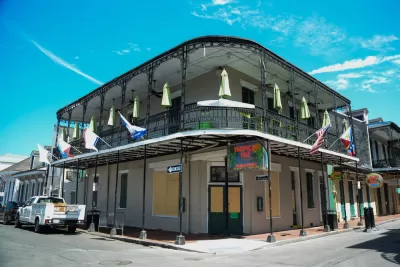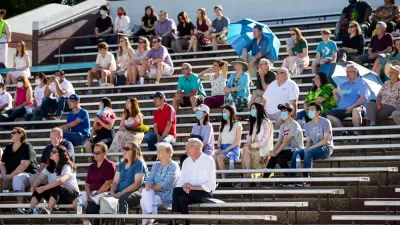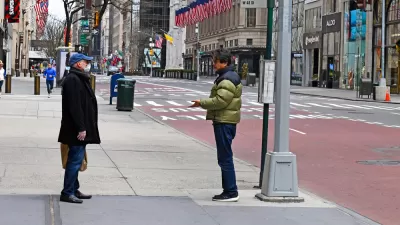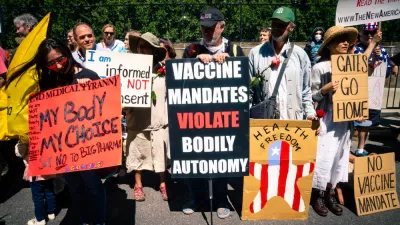New data from the Louisiana Department of Health provide the most detailed look at the disparate impacts of the coronavirus across racial lines.

"Predominantly black communities in the New Orleans metropolitan area have infection rates for the coronavirus that are often far above those in nearby white communities," reports Jeff Adelson, sharing data published this week by the Louisiana Department of Health.
Adelson explains in more detail what the new data reveal about the racial disparities in public health outcomes during the COVID-19 pandemic in the United States:
Previously released data had shown the coronavirus was taking a far greater toll on black Louisiana residents than other races. As of Monday, about 59.3% of the victims who ultimately succumbed to the coronavirus in Louisiana were black, a rate about 1.8 times as high as the African-American share of the state’s population.
The new data divides known infections by U.S. census tract. It provides a stark look at the high rates of infections in predominantly African-American areas and its relatively lower prevalence in nearby white neighborhoods.
Louisiana is one of only a few states to provide data at such a granular level, making this reporting possible, including a lot more insight about what the data reveal about life in Louisiana. New Orleans Mayor LaToya Cantrell, "announced efforts to do more thorough testing of the city's hardest-hit areas on Monday," according to Adelson.
FULL STORY: 'Glaring' racial disparities found in coronavirus infection rates in these New Orleans neighborhoods

Alabama: Trump Terminates Settlements for Black Communities Harmed By Raw Sewage
Trump deemed the landmark civil rights agreement “illegal DEI and environmental justice policy.”

Study: Maui’s Plan to Convert Vacation Rentals to Long-Term Housing Could Cause Nearly $1 Billion Economic Loss
The plan would reduce visitor accommodation by 25% resulting in 1,900 jobs lost.

Planetizen Federal Action Tracker
A weekly monitor of how Trump’s orders and actions are impacting planners and planning in America.

Wind Energy on the Rise Despite Federal Policy Reversal
The Trump administration is revoking federal support for renewable energy, but demand for new projects continues unabated.

Passengers Flock to Caltrain After Electrification
The new electric trains are running faster and more reliably, leading to strong ridership growth on the Bay Area rail system.

Texas Churches Rally Behind ‘Yes in God’s Back Yard’ Legislation
Religious leaders want the state to reduce zoning regulations to streamline leasing church-owned land to housing developers.
Urban Design for Planners 1: Software Tools
This six-course series explores essential urban design concepts using open source software and equips planners with the tools they need to participate fully in the urban design process.
Planning for Universal Design
Learn the tools for implementing Universal Design in planning regulations.
Caltrans
Smith Gee Studio
Institute for Housing and Urban Development Studies (IHS)
City of Grandview
Harvard GSD Executive Education
Toledo-Lucas County Plan Commissions
Salt Lake City
NYU Wagner Graduate School of Public Service





























